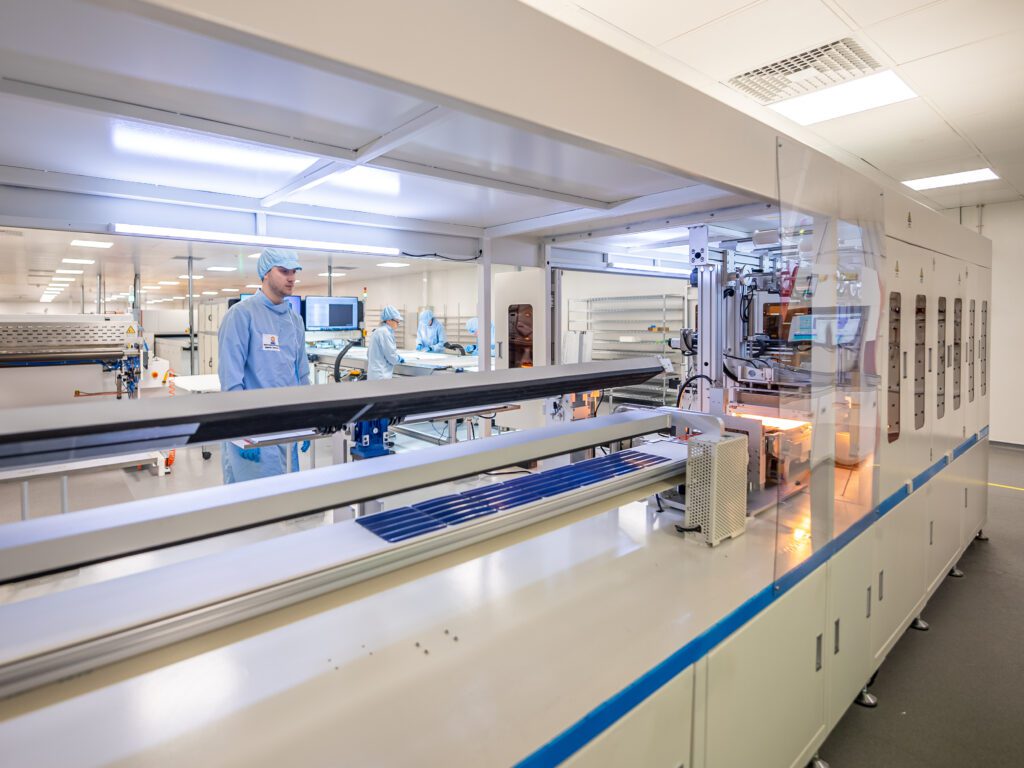An unassuming, brown-brick building opposite Morrisons supermarket in Blyth may hold the key to the future of the British solar panel industry but it’s going to be a close-run thing. Graeme Anderson investigates.

It somehow feels appropriate that Solar Capture Technologies, a small company with big ideas, is housed in the Brunel Building. Engineer Isambard Kingdom Brunel was one of the UK’s greatest innovators — a poster child of the Industrial Revolution — and as we strive to engineer a green industrial revolution today, it’s no exaggeration to saywhat goes on inside Blyth’s Brunel building may have a bearing on its progress.
Formerly a research centre which broke world records in the 1990s when it was exploring ways of improving the energy efficiency of solar cells, Solar Capture Technologies (SCT) is now looking to move from the field of scientific research into domestic and commercial solar installers.
In doing so, it would become one of only two homegrown solar panel producers in the United Kingdom but to achieve that goal it needs its would-be customers to take something of a leap of faith. Which council, housing association or business is going to be the first adopter of what could be the future of solar panel production in our country?
SCT has made its name over decades of developing innovative solutions to tricky energy problems and the solar panels it wants to install on roofs across Northumberland and the wider North East are no exception.
Lewis Caseley, commercial director, explains: “Normally, the solar panels you see on a roof are placed in a grid, box-like structure and cover only a set amount of the roof. This is due to building regulations relating to fire hazards.“We have developed a dual-purpose product that acts as both a roof covering and a solar energy generator covering the entire roof to maximise energy generation. The new technology was successfully installed on a home in Seahouses in December and further installs are planned for homes across Northumberland to demonstrate its effectiveness and efficiency. Instead of delivering the usual 2-4kWh of electricity, the power generation can be significantly more based on the available roof space providing huge benefits for houses in rural Northumberland, which often struggle for an effective electrical grid connection, that means they can effectively go off- grid.
On top of that, the new systems are designed to last 60 or 70 years, rather than the usual 40.

SCT produce state of the art solar panels at the firm’s Blyth base And if Sir Keir Starmer or Rachel Reeves are looking for somewhere to invest their green billions should they be elected, what could be better than buying British in Blyth?
Having proven the technology works, SCT also has the wherewithal to take it to market — the solar panel-making machinery on its premises is capable of producing 500,000 of these groundbreaking panels a year. Lewis joined the company in 2019 — and is still only 30 — but his father Steve, together with managing director Gavin Sanderson, spent years at the facility. It’s a family affair and Lewis knows the business inside out. “I’m hoping this will be a breakthrough year for us,” he said. “We have the products and we have the machines here to scale up to any reasonable demand that’s made of us. “First of all, we are asking councils and housing associations in the region who are looking at solar on their housing stock to consider us. “We think we have a really interesting proposition — genuinely special and innovative solar technology. “We have proven it works from the Seahouses install in December with other installs now on the way. “And I think that once we have a bulk order to deliver we’ll be able to persuade people to buy British, enjoy what is a very attractive and efficient solar roof and hopefully start growing the UK’s domestic solar market.”
